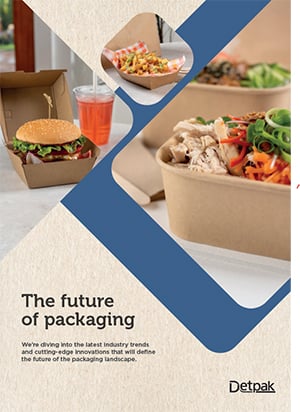Are you sure?
Are you sure? If you change your country now, any items you have added to your quote will disappear.
Your location
Please set your location to see relevant stock levels. Freight costs and taxes will be calculated once you log in.
Note: changing your location will empty your cart.
Why you should question a "plastic free" cup claim
January 31, 2019
Traditional takeaway paper cups feature a polyethylene plastic lining to make the cup waterproof. This lining is difficult to remove from the paper, which is one of the reasons these cups are not able to be recycled in existing infrastructure.
Incoming legislation looking at the sustainability of single-use packaging, alongside consumer pressure for an environmentally friendly option, has seen alternate cup linings hit the market.
Compostable, or PLA, cups have a lining made from corn starch or sugar cane. This bioplastic lining is still a plastic, and unless is makes it to an industrial composter, it is just as destructive as any other plastic packaging in the environment or landfill.
Some cups are also claiming to be ‘plastic free’, but often without clarity provided about what exactly the lining is, and what the end of life option is for the cup.
False claims
We recently worked with the University of South Australia's Coating Group Future Industries to test a number of current in-market cups to determine what the cup linings really were.
From six coffee cups tested, two cups featured end of life claims printed on the cup which were found to be false, determined by the material of the cup lining.
One of these was a cup claiming to be ‘plastic free’, however testing revealed that the lining was PLA, or bioplastic.
Another cup featured a claim stating that it was ‘recyclable and compostable’. This lining was also found to be PLA. While this lining is compostable when it ends up at an industrial composting facility, it is not recyclable.
Also considered was an alternative technology hitting the market and claiming to be ‘plastic free’. This lining is most closely related to a latex material and is still a polymer.
More than just the lining
Despite variance in cup lining technology, unless separation and collection logistics are also in place, the reality is that most takeaway paper cups are headed for landfill.
This is because of several factors, including:
- In kerbside recycling, takeaway cups do not behave like ‘paper or cardboard’ in a Materials Recovery Facility and are often sent to landfill at this sorting stage, read more here
- Access to collection for commercial composting facilities is limited and these cups are most often sent to landfill, read more here
With misleading or vague claims making up a third of the Coating Group Future Industries Institute’s study, we encourage brands to question their suppliers on the materials used to manufacture their cups and ensure that this algins with the end of life claim for the cup.
If you’re unsure of your cup’s lining, or what that means for your cup’s end of life, Contact Us today to discuss further.

